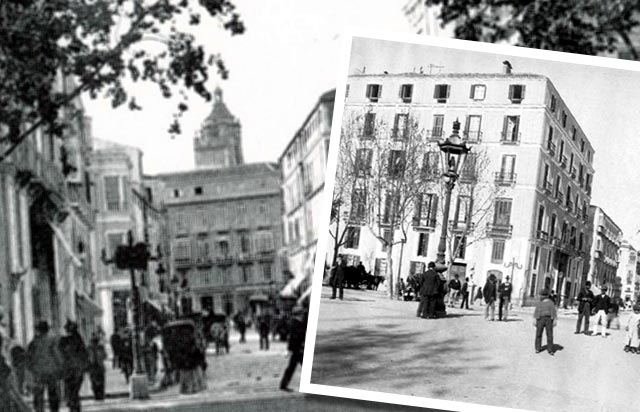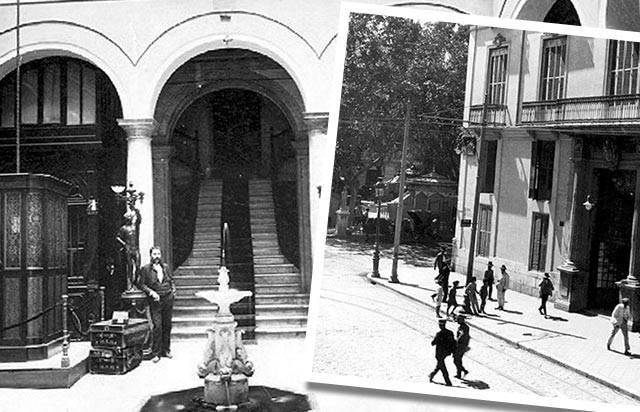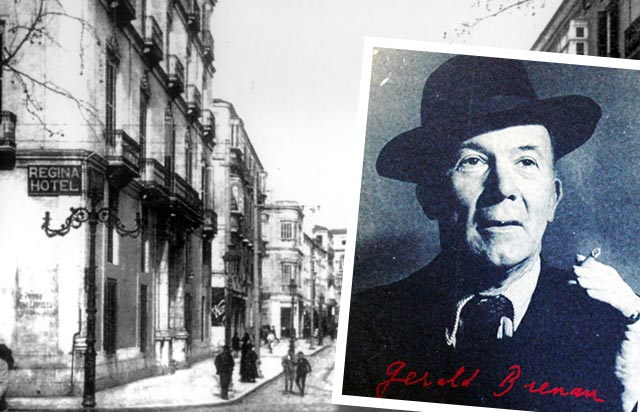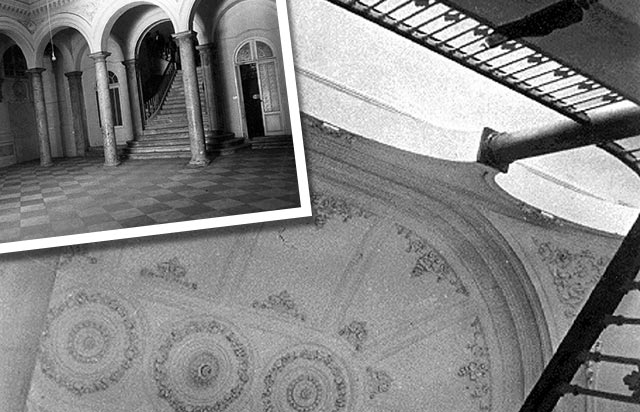History
During the 18th century, in Malaga, the sea almost reached the proximities of what today is Puerta del Mar street. Today’s Alameda avenue was designed during that century, upon the sandy space resulting from the disappearance of the sea. Once the “Puerta del Mar” was demolished, with its towers and its wall, the area receives a great architectonic interest; the buildings that were to determine the architectonic style of the area were created. Two blocks of houses were built, creating what today are Panaderos street and the sidewalks of Atarazanas street..

It is within this framework, where the familia Ugarte-Barrientos, in 1776 has a palace with two floors and three facades, the main entrance facade in Puerta del Mar street and the other two facades in Alameda avenue and Panaderos street..
The main facade is made of stone, framed by two fluted columns ending in Doric capitals, which support the entablature (architrave, frieze with the Ugarte-Barrientos heraldic shield in the middle of the lintel and a projecting cornice), sustaining a very elegant balcony. The building presents an harmonic distribution of windows, an outstanding view thanks to the artistic ironworks in the balconies. With regards to the height of the building, and to the town planning, it fitted perfectly with the rest of buildings in the area, being this palace the only building, which has been preserved up to now, with the exception of the building where the “Junta de Andalucia” Government’s delegation is..
The most impressive part inside the building is its wonderful patio, located just after the entrance hall, the patio gives access to the upper floors ascending through a marble stair which is splited into two parts in the first floor, being united again to go to the next floor. The most remarkable elements in the patio are the twelve marble columns, which give a quadrangular shape to the base, and the skylight protecting it from the outside. There used to be a fountain in the middle of the patio, it disappeared as a result of several interior reforms carried out during a long period of time. The height of the ceilings is a remarkable characteristic (four and a half meters high, on the first floor), the height of the ceiling decreases on the second floor..


